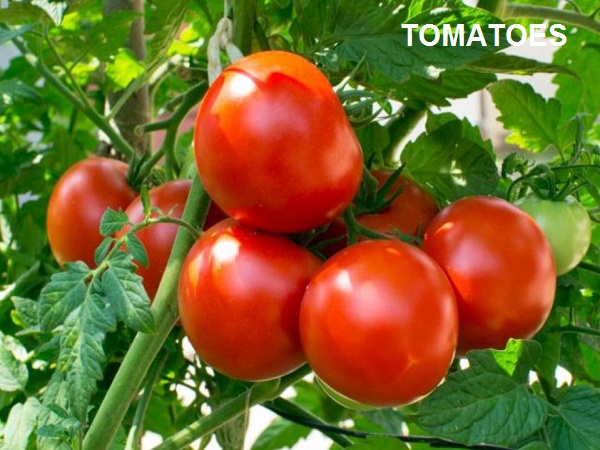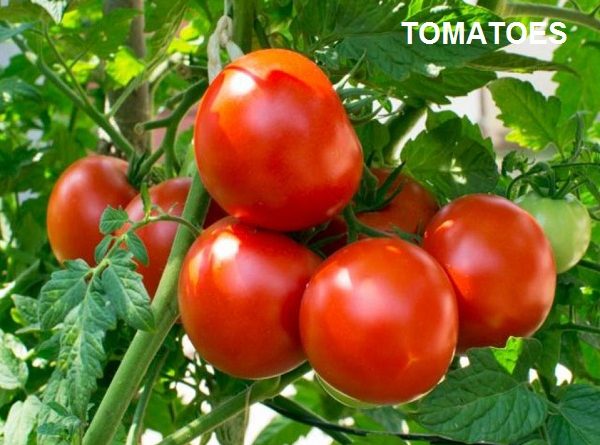Tomato Nutrition Facts: Calories, Carbs, Benefits & Recipe
Tomato Nutrition – the health benefits of tomatoes can be ascribed to their wealth of nutrients and vitamins.
According to the USDA National Nutrient Database, tomatoes contain an impressive amount of vitamin A, vitamin C, and vitamin K, as well as significant amounts of vitamin B6, folate, and thiamine.
They are also a good source of potassium, manganese, phosphorous and copper.
Please Read: Beetroot – 9 Benefits, Nutrition & How to Use In Nigeria
They have dietary fiber and protein as well as several organic compounds like lycopene that contribute to their health benefits.
What Is A Tomato?
Tomato is a plant. The fruit is a familiar vegetable; the scientific name is Solanum lycopersicum.
It is considered both as a fruit and a vegetable and forms an important part of cuisines across the globe.
History
Tomatoes are believed to be native to Mexico, but, are grown in countries all over the world.
Tomato farming has been a money-spinner for ages because almost everybody eats the vegetable.
Read Also: How to Puree Tomatoes At Home
In Nigeria, tomato cultivation is mostly done in the northern part of the country.
This fruits come in various shapes and colors but maintains its beautiful red color when ripe.

Some gardeners see tomatoes in a rainbow of colors: red, sure, but also shades of yellow, orange, burgundy, purple, pink, green, streaked and striped, and practically black.
Alongside those colors come a range of flavors. There is a tomato for every taste.
You can find tomatoes in different foods like soup, salad, sauce, stew, dips (like guacamole), puree, pasta, pizzas, ketchup, various beverages, and baked dishes. You can eat them raw too.
Tomato Nutrition Facts
The water in tomatoes is around 95%. The other 5% consists mainly of carbohydrates and fiber.
Here are the nutrients in a small (100-gram) raw tomato (1Trusted Source):
- Calories: 18
- Water: 95%
- Protein: 0.9 grams
- Carbs: 3.9 grams
- Sugar: 2.6 grams
- Fiber: 1.2 grams
- Fat: 0.2 grams
Carbs
Tomatoes are low in calories and low in carbs. There are 3.5 carbs in a small tomato, making it a low-carb food. Most of the carbohydrate in tomatoes is fiber (2.4 grams).
Tomato Nutrition Benefits
- Tomato contains a chemical called lycopene that is used for the avoidance of cancer of the breast colon, bladder, cervix, and rectum, ovaries, pancreas, stomach, lung, and prostate.
- Some people use tomato to treat osteoarthritis, the common cold, chills, high blood pressure, and digestive disorders disease, cataracts, and asthma. Also, diseases of the heart and blood vessels (Cardiovascular disease)
- Tomato and Diabetes
Similar to other non-starchy fruits, tomatoes have a low GI ranking.
One study in 2011 found that 200 grams of raw tomato (that is about 1.5 medium tomatoes) each day lower blood pressure in people with type-2-diabetes.
- Tomato and Weight loss
In spite of being rich in nutrients like vitamins, minerals, protein, and fiber, tomatoes are also, low in calories.
So, consuming two tomatoes will not only make you feel full but will also cut down your calorie consumption?
It will help you to create that calorie shortfall required to lose weight
- Tomato Face Mask
The acidity in tomato assists in getting rid of dull, rough skin and stimulates cellular renewal.
As a natural astringent, tomato firms the skin and helps diminish fine lines.
Tomato also helps to tighten large pores and brightens up your complexion.
Tomatoes contain salicylic acid – a common ingredient in acne products.
Safety and Side Effects
Tomatoes are generally well tolerated and tomato allergy is very rare (47Trusted Source, 48Trusted Source).
If you suspect an allergy to tomato, seek the advice of a qualified healthcare professional.
Recipe
Tomato – Vegetable Juice Recipe: No Cooking
To make the most nutritious tomato juice the easy way:
- Firstly, wash your fresh ripe tomatoes thoroughly, cut out the cores or bruised or bad spots.
- Then, place the whole tomatoes in a blender-without peeling.
- After that, blend until smooth and drink either plain or in cocktails such as a Bloody Mary, a Caesar, or Michelada.
The method of peeling the tomatoes, before cooking and blending leave many of the tomatoes most important nutrients behind.
Tomato skins have the richest concentration of lycopene and dietary fiber. It also contains flavonoid phytonutrients-which are effective in warding off allergies, inflammation, ulcers, and viruses.
Canning
You can add lemon juice to increase the acidity of your tomato juice if you want to put it in a can.
Refrigeration
Besides canning your tomato juice, you can also freeze it. Once the juice has cooled, simply pour it into freezer-safe containers.
Tomato juice Nutrition
Tomato juice is a popular nutritious beverage that is high in many vitamins and minerals.
These vitamins and minerals are essential to our health, and they include vitamin C, vitamin A, B vitamins, potassium, and magnesium.
Is Tomato Juice Good For You?
Tomato juice is high in nutrients like vitamin C, B vitamins, and potassium. It’s also an excellent source of antioxidants, such as lycopene, which may lower inflammation and your risk of heart disease and some cancers.




